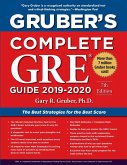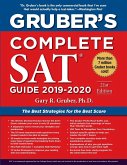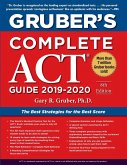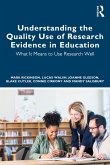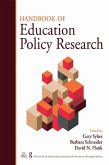34,95 €
34,95 €
inkl. MwSt.
Sofort per Download lieferbar

17 °P sammeln
34,95 €
Als Download kaufen

34,95 €
inkl. MwSt.
Sofort per Download lieferbar

17 °P sammeln
Jetzt verschenken
Alle Infos zum eBook verschenken
34,95 €
inkl. MwSt.
Sofort per Download lieferbar
Alle Infos zum eBook verschenken

17 °P sammeln
- Format: ePub
- Merkliste
- Auf die Merkliste
- Bewerten Bewerten
- Teilen
- Produkt teilen
- Produkterinnerung
- Produkterinnerung

Bitte loggen Sie sich zunächst in Ihr Kundenkonto ein oder registrieren Sie sich bei
bücher.de, um das eBook-Abo tolino select nutzen zu können.
Hier können Sie sich einloggen
Hier können Sie sich einloggen
Sie sind bereits eingeloggt. Klicken Sie auf 2. tolino select Abo, um fortzufahren.

Bitte loggen Sie sich zunächst in Ihr Kundenkonto ein oder registrieren Sie sich bei bücher.de, um das eBook-Abo tolino select nutzen zu können.
Action Research: An Educational Leader's Guide to School Improvement, Fourth Edition, is a clear and practical guide to conducting action research in schools. Although it offers neither a cookbook nor a quick-fix approach, this book does outline the process of designing and reporting an action research project.
- Geräte: eReader
- mit Kopierschutz
- eBook Hilfe
- Größe: 3.92MB
Andere Kunden interessierten sich auch für
![Action Research (eBook, PDF) Action Research (eBook, PDF)]() Jeffrey GlanzAction Research (eBook, PDF)34,95 €
Jeffrey GlanzAction Research (eBook, PDF)34,95 €![Gruber's Complete GRE Guide 2019-2020 (eBook, ePUB) Gruber's Complete GRE Guide 2019-2020 (eBook, ePUB)]() Gary GruberGruber's Complete GRE Guide 2019-2020 (eBook, ePUB)13,84 €
Gary GruberGruber's Complete GRE Guide 2019-2020 (eBook, ePUB)13,84 €![Gruber's Complete SAT Guide 2019-2020 (eBook, ePUB) Gruber's Complete SAT Guide 2019-2020 (eBook, ePUB)]() Gary GruberGruber's Complete SAT Guide 2019-2020 (eBook, ePUB)13,84 €
Gary GruberGruber's Complete SAT Guide 2019-2020 (eBook, ePUB)13,84 €![Gruber's Complete ACT Guide 2019-2020 (eBook, ePUB) Gruber's Complete ACT Guide 2019-2020 (eBook, ePUB)]() Gary GruberGruber's Complete ACT Guide 2019-2020 (eBook, ePUB)13,84 €
Gary GruberGruber's Complete ACT Guide 2019-2020 (eBook, ePUB)13,84 €![Understanding the Quality Use of Research Evidence in Education (eBook, ePUB) Understanding the Quality Use of Research Evidence in Education (eBook, ePUB)]() Mark RickinsonUnderstanding the Quality Use of Research Evidence in Education (eBook, ePUB)24,95 €
Mark RickinsonUnderstanding the Quality Use of Research Evidence in Education (eBook, ePUB)24,95 €![Handbook of Education Policy Research (eBook, ePUB) Handbook of Education Policy Research (eBook, ePUB)]() Handbook of Education Policy Research (eBook, ePUB)133,95 €
Handbook of Education Policy Research (eBook, ePUB)133,95 €![Practical Statistics for Educators (eBook, ePUB) Practical Statistics for Educators (eBook, ePUB)]() Ruth RavidPractical Statistics for Educators (eBook, ePUB)30,95 €
Ruth RavidPractical Statistics for Educators (eBook, ePUB)30,95 €-
-
-
Action Research: An Educational Leader's Guide to School Improvement, Fourth Edition, is a clear and practical guide to conducting action research in schools. Although it offers neither a cookbook nor a quick-fix approach, this book does outline the process of designing and reporting an action research project.
Produktdetails
- Produktdetails
- Verlag: Bloomsbury eBooks US
- Seitenzahl: 376
- Erscheinungstermin: 19. November 2024
- Englisch
- ISBN-13: 9781538189610
- Artikelnr.: 74830101
- Verlag: Bloomsbury eBooks US
- Seitenzahl: 376
- Erscheinungstermin: 19. November 2024
- Englisch
- ISBN-13: 9781538189610
- Artikelnr.: 74830101
- Herstellerkennzeichnung Die Herstellerinformationen sind derzeit nicht verfügbar.
Jeffrey Glanz EdD, is a professor of educational administration and supervision at Michlalah Jerusalem College in Jerusalem, Israel. He is series editor of the Rowman & Littlefield School Leadership Series.
Preface
Acknowledgments
Introduction
Brief Description
Uniqueness
Audience
Rationale
Assumptions
Goals
Organization and Content
References
Chapter 1: An Introduction to Action Research: It's Not All
That Complicated
What Is Research?
Ignorance About the Utility of Research
Research as a Professional Responsibility
Why Educational Leaders Might Avoid Research
A Paradigm for Research
Evaluation Research: The Most Common Use of Action Research for Educational
Leaders
Evolution of Action Research
Action Research Defined
Benefits of Action Research
Action Research Is Not Complicated
Steps in Action Research
The Educational Leader as a Reflective Practitioner
Reflective Practice
Summary
References
Chapter 2: Teaching and Doing Action Research Through
General Semantics
Introduction
What Is General Semantics?
Course Description
Another Lesson From General Semantics
Summary and Conclusion
References
Chapter 3: Getting Started on an Action Research Project
Getting Started: The Overall Research Plan
Clarifying Purposes
Considering Logistics
The Plan
Suggestions for Getting Started
References
Chapter 4: Quantitative Approaches to Action Research
Descriptive Research
Correlation Research
Group Comparison Research
Choosing a Research Design
An Inadequate Research Design
Adequate Research Designs (or Simplified Designs for School Research)
References
Chapter 5: Qualitative Approaches to Action Research
Historical Inquiry
Ethnographic Research
Case Study Research
References
Chapter 6: Easy Steps to Program Development and Evaluation Research
Eight Steps of Program Development
Five Steps of Program Evaluation
References
Chapter 7: Data Collection Techniques That Work
Popular Data Collection Techniques Used in Action Research
Primary Data Collection Techniques
Secondary Data Collection Techniques
References
Chapter 8: How to Analyze Quantitative Data Easily
Statistical Analyses
Application of Mean, Standard Deviation, and Percentage
The t-Test
The Sign Test
The Mann-Whitney U-Test
The Chi Square and Other User-Friendly Statistics
References
Chapter 9: How to Analyze Qualitative Data Easily
Analytic Procedures
Computer Applications
Tables, Graphs, and Charts
References
Chapter 10: Putting It All Together: What Does It Mean?
Interpreting Data
Reporting Data
Writing the Research Report
Overview of Steps for Writing Up an Action Research Project
Elements of the Report
References
Chapter 11: Completing Your Action Research Master's Thesis Project
Step 1: Identify a Topic
Step 2: Write a Literature Review
Step 3: Develop a Research Plan
Step 4: Carry Out the Plan
Step 5: Write Up the Results
Chapter 12: Action Research in Practice
Action Planning and Implementation
Becoming Reflective Practitioners Through Action Research
Conclusion
References
Chapter 13:Seven Suggestions for Action Researchers
Expect the Unexpected
Be Receptive to Both Quantitative and Especially Qualitative Approaches
Give It Your All
Don't Make a Decision Too Quickly
Keep Lines of Communication Open and Clear
Appreciate Your Enlightened Eye
Take Action
The Ethics of Action Research
Conclusion
References
Appendix A: Pretest
Appendix B: Sample Write-Up of Quantitative and Qualitative Methods and
Results
Appendix C: Sample Appendixes
Appendix D: Are You a Good Writer?
Appendix E: Brief Description of APA
Appendix F: Evaluation Criteria for Report
Appendix G: Sample Consent Forms
Appendix H: Sample Cover Letter
Appendix I: Sample Action Research Proposals by Teachers
Glossary
Annotated References
Index
About the Author
Acknowledgments
Introduction
Brief Description
Uniqueness
Audience
Rationale
Assumptions
Goals
Organization and Content
References
Chapter 1: An Introduction to Action Research: It's Not All
That Complicated
What Is Research?
Ignorance About the Utility of Research
Research as a Professional Responsibility
Why Educational Leaders Might Avoid Research
A Paradigm for Research
Evaluation Research: The Most Common Use of Action Research for Educational
Leaders
Evolution of Action Research
Action Research Defined
Benefits of Action Research
Action Research Is Not Complicated
Steps in Action Research
The Educational Leader as a Reflective Practitioner
Reflective Practice
Summary
References
Chapter 2: Teaching and Doing Action Research Through
General Semantics
Introduction
What Is General Semantics?
Course Description
Another Lesson From General Semantics
Summary and Conclusion
References
Chapter 3: Getting Started on an Action Research Project
Getting Started: The Overall Research Plan
Clarifying Purposes
Considering Logistics
The Plan
Suggestions for Getting Started
References
Chapter 4: Quantitative Approaches to Action Research
Descriptive Research
Correlation Research
Group Comparison Research
Choosing a Research Design
An Inadequate Research Design
Adequate Research Designs (or Simplified Designs for School Research)
References
Chapter 5: Qualitative Approaches to Action Research
Historical Inquiry
Ethnographic Research
Case Study Research
References
Chapter 6: Easy Steps to Program Development and Evaluation Research
Eight Steps of Program Development
Five Steps of Program Evaluation
References
Chapter 7: Data Collection Techniques That Work
Popular Data Collection Techniques Used in Action Research
Primary Data Collection Techniques
Secondary Data Collection Techniques
References
Chapter 8: How to Analyze Quantitative Data Easily
Statistical Analyses
Application of Mean, Standard Deviation, and Percentage
The t-Test
The Sign Test
The Mann-Whitney U-Test
The Chi Square and Other User-Friendly Statistics
References
Chapter 9: How to Analyze Qualitative Data Easily
Analytic Procedures
Computer Applications
Tables, Graphs, and Charts
References
Chapter 10: Putting It All Together: What Does It Mean?
Interpreting Data
Reporting Data
Writing the Research Report
Overview of Steps for Writing Up an Action Research Project
Elements of the Report
References
Chapter 11: Completing Your Action Research Master's Thesis Project
Step 1: Identify a Topic
Step 2: Write a Literature Review
Step 3: Develop a Research Plan
Step 4: Carry Out the Plan
Step 5: Write Up the Results
Chapter 12: Action Research in Practice
Action Planning and Implementation
Becoming Reflective Practitioners Through Action Research
Conclusion
References
Chapter 13:Seven Suggestions for Action Researchers
Expect the Unexpected
Be Receptive to Both Quantitative and Especially Qualitative Approaches
Give It Your All
Don't Make a Decision Too Quickly
Keep Lines of Communication Open and Clear
Appreciate Your Enlightened Eye
Take Action
The Ethics of Action Research
Conclusion
References
Appendix A: Pretest
Appendix B: Sample Write-Up of Quantitative and Qualitative Methods and
Results
Appendix C: Sample Appendixes
Appendix D: Are You a Good Writer?
Appendix E: Brief Description of APA
Appendix F: Evaluation Criteria for Report
Appendix G: Sample Consent Forms
Appendix H: Sample Cover Letter
Appendix I: Sample Action Research Proposals by Teachers
Glossary
Annotated References
Index
About the Author
Preface
Acknowledgments
Introduction
Brief Description
Uniqueness
Audience
Rationale
Assumptions
Goals
Organization and Content
References
Chapter 1: An Introduction to Action Research: It's Not All
That Complicated
What Is Research?
Ignorance About the Utility of Research
Research as a Professional Responsibility
Why Educational Leaders Might Avoid Research
A Paradigm for Research
Evaluation Research: The Most Common Use of Action Research for Educational
Leaders
Evolution of Action Research
Action Research Defined
Benefits of Action Research
Action Research Is Not Complicated
Steps in Action Research
The Educational Leader as a Reflective Practitioner
Reflective Practice
Summary
References
Chapter 2: Teaching and Doing Action Research Through
General Semantics
Introduction
What Is General Semantics?
Course Description
Another Lesson From General Semantics
Summary and Conclusion
References
Chapter 3: Getting Started on an Action Research Project
Getting Started: The Overall Research Plan
Clarifying Purposes
Considering Logistics
The Plan
Suggestions for Getting Started
References
Chapter 4: Quantitative Approaches to Action Research
Descriptive Research
Correlation Research
Group Comparison Research
Choosing a Research Design
An Inadequate Research Design
Adequate Research Designs (or Simplified Designs for School Research)
References
Chapter 5: Qualitative Approaches to Action Research
Historical Inquiry
Ethnographic Research
Case Study Research
References
Chapter 6: Easy Steps to Program Development and Evaluation Research
Eight Steps of Program Development
Five Steps of Program Evaluation
References
Chapter 7: Data Collection Techniques That Work
Popular Data Collection Techniques Used in Action Research
Primary Data Collection Techniques
Secondary Data Collection Techniques
References
Chapter 8: How to Analyze Quantitative Data Easily
Statistical Analyses
Application of Mean, Standard Deviation, and Percentage
The t-Test
The Sign Test
The Mann-Whitney U-Test
The Chi Square and Other User-Friendly Statistics
References
Chapter 9: How to Analyze Qualitative Data Easily
Analytic Procedures
Computer Applications
Tables, Graphs, and Charts
References
Chapter 10: Putting It All Together: What Does It Mean?
Interpreting Data
Reporting Data
Writing the Research Report
Overview of Steps for Writing Up an Action Research Project
Elements of the Report
References
Chapter 11: Completing Your Action Research Master's Thesis Project
Step 1: Identify a Topic
Step 2: Write a Literature Review
Step 3: Develop a Research Plan
Step 4: Carry Out the Plan
Step 5: Write Up the Results
Chapter 12: Action Research in Practice
Action Planning and Implementation
Becoming Reflective Practitioners Through Action Research
Conclusion
References
Chapter 13:Seven Suggestions for Action Researchers
Expect the Unexpected
Be Receptive to Both Quantitative and Especially Qualitative Approaches
Give It Your All
Don't Make a Decision Too Quickly
Keep Lines of Communication Open and Clear
Appreciate Your Enlightened Eye
Take Action
The Ethics of Action Research
Conclusion
References
Appendix A: Pretest
Appendix B: Sample Write-Up of Quantitative and Qualitative Methods and
Results
Appendix C: Sample Appendixes
Appendix D: Are You a Good Writer?
Appendix E: Brief Description of APA
Appendix F: Evaluation Criteria for Report
Appendix G: Sample Consent Forms
Appendix H: Sample Cover Letter
Appendix I: Sample Action Research Proposals by Teachers
Glossary
Annotated References
Index
About the Author
Acknowledgments
Introduction
Brief Description
Uniqueness
Audience
Rationale
Assumptions
Goals
Organization and Content
References
Chapter 1: An Introduction to Action Research: It's Not All
That Complicated
What Is Research?
Ignorance About the Utility of Research
Research as a Professional Responsibility
Why Educational Leaders Might Avoid Research
A Paradigm for Research
Evaluation Research: The Most Common Use of Action Research for Educational
Leaders
Evolution of Action Research
Action Research Defined
Benefits of Action Research
Action Research Is Not Complicated
Steps in Action Research
The Educational Leader as a Reflective Practitioner
Reflective Practice
Summary
References
Chapter 2: Teaching and Doing Action Research Through
General Semantics
Introduction
What Is General Semantics?
Course Description
Another Lesson From General Semantics
Summary and Conclusion
References
Chapter 3: Getting Started on an Action Research Project
Getting Started: The Overall Research Plan
Clarifying Purposes
Considering Logistics
The Plan
Suggestions for Getting Started
References
Chapter 4: Quantitative Approaches to Action Research
Descriptive Research
Correlation Research
Group Comparison Research
Choosing a Research Design
An Inadequate Research Design
Adequate Research Designs (or Simplified Designs for School Research)
References
Chapter 5: Qualitative Approaches to Action Research
Historical Inquiry
Ethnographic Research
Case Study Research
References
Chapter 6: Easy Steps to Program Development and Evaluation Research
Eight Steps of Program Development
Five Steps of Program Evaluation
References
Chapter 7: Data Collection Techniques That Work
Popular Data Collection Techniques Used in Action Research
Primary Data Collection Techniques
Secondary Data Collection Techniques
References
Chapter 8: How to Analyze Quantitative Data Easily
Statistical Analyses
Application of Mean, Standard Deviation, and Percentage
The t-Test
The Sign Test
The Mann-Whitney U-Test
The Chi Square and Other User-Friendly Statistics
References
Chapter 9: How to Analyze Qualitative Data Easily
Analytic Procedures
Computer Applications
Tables, Graphs, and Charts
References
Chapter 10: Putting It All Together: What Does It Mean?
Interpreting Data
Reporting Data
Writing the Research Report
Overview of Steps for Writing Up an Action Research Project
Elements of the Report
References
Chapter 11: Completing Your Action Research Master's Thesis Project
Step 1: Identify a Topic
Step 2: Write a Literature Review
Step 3: Develop a Research Plan
Step 4: Carry Out the Plan
Step 5: Write Up the Results
Chapter 12: Action Research in Practice
Action Planning and Implementation
Becoming Reflective Practitioners Through Action Research
Conclusion
References
Chapter 13:Seven Suggestions for Action Researchers
Expect the Unexpected
Be Receptive to Both Quantitative and Especially Qualitative Approaches
Give It Your All
Don't Make a Decision Too Quickly
Keep Lines of Communication Open and Clear
Appreciate Your Enlightened Eye
Take Action
The Ethics of Action Research
Conclusion
References
Appendix A: Pretest
Appendix B: Sample Write-Up of Quantitative and Qualitative Methods and
Results
Appendix C: Sample Appendixes
Appendix D: Are You a Good Writer?
Appendix E: Brief Description of APA
Appendix F: Evaluation Criteria for Report
Appendix G: Sample Consent Forms
Appendix H: Sample Cover Letter
Appendix I: Sample Action Research Proposals by Teachers
Glossary
Annotated References
Index
About the Author


